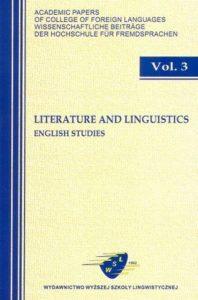2005
 This article examines the phenomenon of Asian horror1 and its effect on contemporary Western horror film industry. The recent popularity of Asian horror films marked by their continuous presence in mainstream Western cinema chains since the opening of Hideo Nakata’s Ringu in 1999, numerous instant remakes of the most successful Oriental productions by big American studios, the employment of Eastern film directors to re-shape horror and related genres in the West, or simply the ever-growing number of Asian motifs and influences in new horror films are more than enough to prove that the transfusion of new blood is much needed and much welcome at the same time. What makes it particularly interesting, however, is the fact that Asian horror does not actually offer anything new. The most successful and talked-about film productions, such as Nakata’s Ringu (1998) /Ringu 2 (1998), The Pang Brothers’ The Eye (2002), or Nakata’s Dark Water (2002) do not overwhelm the audience with sophisticated special effects and explosive action. As one of the British film critics aptly put it in his review of Nakata’s Ringu 2, ‘never before have we been so scared by two hands on a railing.’ And this is where the secret of Asian horror lies: in going back to the deepest roots of horror, in tackling our hidden fears, in bringing the Uncanny to life and scaring us out of our wits. This article is but a glimpse of how it is done.
This article examines the phenomenon of Asian horror1 and its effect on contemporary Western horror film industry. The recent popularity of Asian horror films marked by their continuous presence in mainstream Western cinema chains since the opening of Hideo Nakata’s Ringu in 1999, numerous instant remakes of the most successful Oriental productions by big American studios, the employment of Eastern film directors to re-shape horror and related genres in the West, or simply the ever-growing number of Asian motifs and influences in new horror films are more than enough to prove that the transfusion of new blood is much needed and much welcome at the same time. What makes it particularly interesting, however, is the fact that Asian horror does not actually offer anything new. The most successful and talked-about film productions, such as Nakata’s Ringu (1998) /Ringu 2 (1998), The Pang Brothers’ The Eye (2002), or Nakata’s Dark Water (2002) do not overwhelm the audience with sophisticated special effects and explosive action. As one of the British film critics aptly put it in his review of Nakata’s Ringu 2, ‘never before have we been so scared by two hands on a railing.’ And this is where the secret of Asian horror lies: in going back to the deepest roots of horror, in tackling our hidden fears, in bringing the Uncanny to life and scaring us out of our wits. This article is but a glimpse of how it is done.
